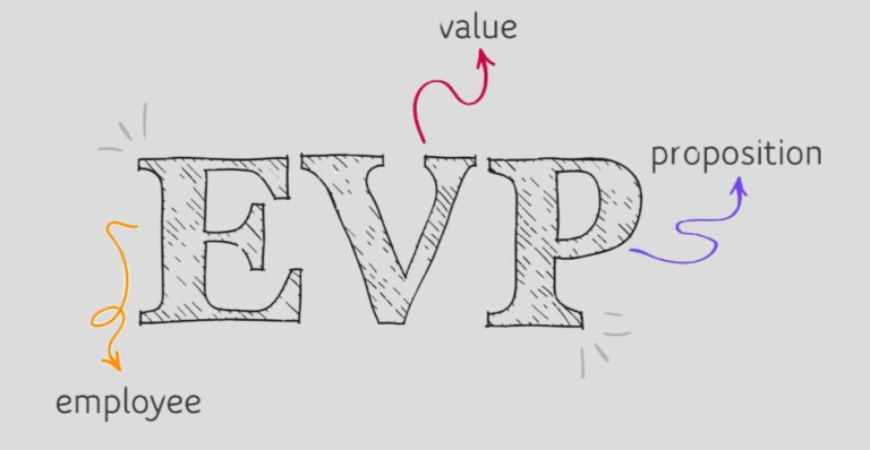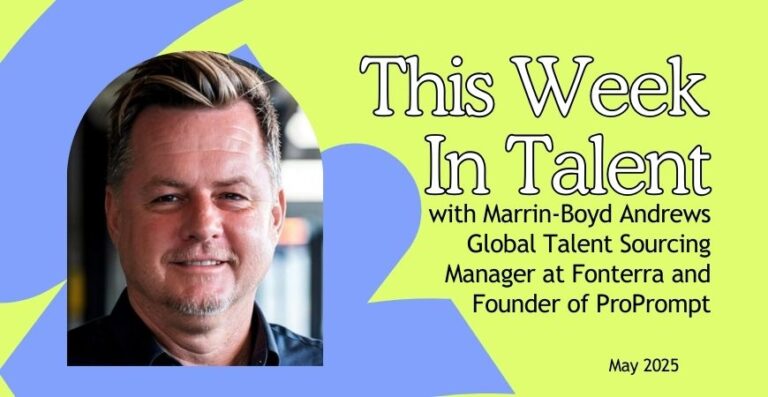It’s a really interesting point in time for those embarking on EVP refreshes. Since the pandemic hit, I’ve been in a fortunate position to have run a number of employee research projects, across a number of industries.
What I’ve seen is a significant increase in support for teams to invest in building out their EVP – for many organisations, this is the first foray. For others, it’s a much-needed refresh as both employee experience and employee drivers have changed significantly over the last two years.
Talent acquisition and retention has fast become one of the biggest issues for organisations, as the impact of empty seats on business performance has become very real. Previously seen as a ‘nice to do’, today many are viewing these projects as critical. The problem is the EVP is again seen as the silver bullet (a term used to describe it at every conference a decade ago) – where it in itself is being relied upon to solve recruitment challenges.
EVP is just one piece of the puzzle
In one of the toughest recruitment markets in decades, organisations need to find ways to somehow get an unfair share of talent applying to their roles. When there are more jobs advertised than ever, coupled with the lowest levels of unemployment, companies need to find ways to stand out from the pack in order for their jobs to even be noticed, let alone considered.
EVPs are being touted as the solution, and while yes they can be part of the solution, there are bigger challenges being faced by those leading the development of them within organisations.
For one, I’m seeing a massive difference in employee needs and the reality of employee experience. Organisations have spent the last half decade focused on building out great employee experiences. The competitiveness of the tech industry paved the way for how perks and benefits can be done, and how culture can be a true differentiator. But the pandemic has limited people’s ability to leverage and benefit from many of these experiences.
We are trying to return to normal, but reality is, it will never be normal again. The struggle is real in getting employees back to the workplace, rebuilding culture and bringing some joy and excitement into our work (as let’s face it – virtual trivia isn’t exactly filling my glass!)
Our fundamental values have changed
We’ve faced an existential crisis, and we’ve had two years to stop and think about what is truly important to us. As a result, our needs and wants have changed significantly.
The last few years have taken their toll, on people and business. Although some employee engagement data would show otherwise, in all my research I have heard first-hand how people have lost energy and engagement with their work – probably a bit of loyalty and connection to their organisation and its purpose too. As people are not physically surrounded by their work, connection and belonging has reduced, and the employee/employer relationship has become more transactional.
In work and life, people are focusing on what has been taken away from them – what they miss. For new starters in the last two years, they never had the chance to enjoy the ‘good old days’ of organisations, so there are definitely weaker forces keeping them in their seats. They have been sold an EVP that was built on the pre-pandemic organisation, and sadly for many, this is not the experience they are receiving.
On the flipside, organisations are struggling too. In many industries, the pandemic has impacted their bottom line. They have been forced to adapt and transform in order to survive. Whilst they’ve had to be more flexible with employees, productivity has taken a hit. Yes, while there has been some who have taken advantage, there are many who have worked harder than before. People are feeling burnt-out after working much longer hours, as the lines of work and home are blurred.
Unfortunately, these extra hours aren’t always paying out as increased productivity – lack of tools, technology, collaboration and on the job development, means people are working harder to get the same work done.
Heightened by the pandemic, most organisations are currently on “a journey” – be it transformation, reinvention, growth into new markets, automation and digitisation, or culture. They are needing more bang for their back, so are looking to HR to build a high-performance culture. For employees, this means giving more.
Here lies the disconnect
You need high levels of EVP satisfaction to see increased levels of discretionary effort and intent to stay, which leads to high levels of organisational performance. But employees are feeling dissatisfied with delivery on our EVPs, as the experience they are having today isn’t as good or satisfying as it was pre-pandemic.
Execs know they need a compelling EVP. But when playing back objective research data on current state employee experience and beliefs, project owners are being faced with disbelief, resistance, hesitation or concern – or all of the above. The reality is, employee experience and engagement has taken a hit, it is not the same, and employees are less willing to advocate for it. In a time where people have the power, they are pushing for what they want.
Whilst organisations are wanting and needing something shiny, sexy and new to attract talent, the reality is (in many cases) their proposition is actually weaker than before.
In my next article, I’ll be walking through the key considerations for building (or rebuilding) a compelling EVP that delivers an authentic and credible view into your organisation.
This article originally appeared in Employer Brand Mason and has been republished here with permission.
Keen to find out more?
Join Brie Mason at ATC2022, together with Clint Williams, Talent Leader at Lion, and Sarah Halaseh-Russo, People Experience at Officeworks, as they discuss the need to gain alignment on a change in EVP mindset and approach, and a redefinition of roles and responsibilities.








